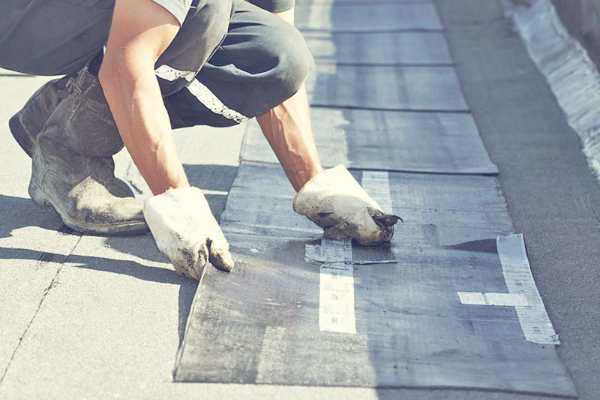In terms of roofing, homeowners typically face a crucial decision: should they opt for a level roof or a sloped roof? Each choice presents its unique advantages and considerations, making it important to weigh your options carefully. Understanding the key differences between flat roofs and sloped roofs can notably affect not only the visual charm of your house but also its longevity, maintenance needs, and overall performance.
This guide for beginners will we will investigate the fundamentals of both types of roofing, to assist you in making an informed decision. Regardless of whether you’re considering a new installation or a replacement, understanding how to evaluate your current roof condition is crucial. From recognizing when it’s time for a replacement roof to comprehending the different roofing materials available, this guide will provide the insights you need to start your roofing process. With a focus on common roofing problems, repair solutions, and tips for extending the life of your roof, you'll be well-prepared to navigate the complexities of roofing.
Understanding Roofing Types
When it comes to roof construction, a pair of main types are notable: flat rooftops and sloped roofs. Flat roofs feature by a little angle, making them a common option for industrial facilities and modern home architectures. They present advantages such as easy accessibility for servicing and installation of HVAC equipment. However, flat rooftops can be prone to liquid build-up if not properly designed and looked after, therefore understanding the specific roofing components utilized is crucial in extending their service life.
Conversely, inclined roofs, which have a noticeable incline, have been the traditional selection for a lot of homes. The steepness of these roofs facilitates superior water runoff, minimizing the likelihood of water intrusion and harm from stagnant moisture. Additionally, angled roofs can more effectively endure harsh climatic factors, as they help lessen heavy snow accumulation and control air force effectively. Property owners often value the decorative appeal of angled roofs, as they can boost the overall appearance of their dwellings.
Selecting among flat vs sloped rooftops generally is based on multiple considerations including local weather, construction design, and the individual requirements of the property owner. It's crucial to factor in these elements, as well as the potential for maintenance and servicing, when deciding. Comprehending the properties of the different roofing type can aid householders make informed choices that align with their sustained objectives for roof durability and functionality.
Essential Maintenance and Fixing Tips
Routine maintenance is crucial for both flat and angled roofs to ensure their longevity and performance. Homeowners should conduct physical inspections a couple of times a year, ideally in spring and spring, looking for signs of wear and tear, missing shingles, or pooling water on flat roofs. Keeping gutters and downspouts clear of debris is also essential to prevent water damage and ensure adequate drainage. Regular cleaning and upkeep of roof areas can help prevent expensive repairs down the line.
In furthermore to physical inspections, it's important to arrange professional roof inspections every years, particularly after extreme weather events. A roof expert can detect problems that may not be apparent to the layman's eye, such as underlying damage or potential leaks. Addressing these issues promptly can spare homeowners costs and prolong the lifespan of their roofs. The ultimate guide to roof refurbishment emphasizes the necessity of preventive maintenance to prevent the need for early roof refurbishment.
For homeowners considering DIY roof repairs, it is essential to recognize their skill level and the difficulty of the fix needed. Basic tasks like changing a few shingles may be doable, but more extensive repairs, especially on flat roofs, are best left to professionals. Hiring experienced roofers ensures that repairs are performed accurately and safely, which can help prevent further complications. Understanding when to employ a specialist versus doing it yourself can make a huge difference in maintaining your roof’s health.
Cost and Setup Factors
When considering a roof replacement, both level and sloped roofs come with their own unique expenses and installation challenges. Generally, sloped roofs are more prevalent in home areas, potentially leading to a wider range of roofing options and costs. Installation costs can vary significantly based on the roofing type chosen, such as asphalt shingles or metal sheets for a sloped roof, compared to membranes or built-up systems for flat roofs. It is essential to factor in both materials and work when calculating the total expense, as the complexity of the setup can affect labor expenses.
Flat roofs often require more frequent care and careful consideration regarding drainage, which can influence long-term expenses. If not properly maintained, flat roofs are more prone to water damage and other issues that can lead to costly repairs down the road. Conversely, while sloped roofs may have elevated upfront installation due to their structure, they generally provide better water management and longer lifespans, which can result in lower long-term upkeep costs. Homeowners should consider these elements when choosing which roof style is best suited for their financial plan.

Another important consideration is the potential for energy savings and insurance costs. Flat roofs may offer space for solar panels or green roofing systems, presenting opportunities for energy savings and lowered environmental footprint. In Roof replacement Kearney NE , sloped roofs might be favored by insurance companies due to their proven durability against extreme weather conditions. Homeowners should consult with roofing experts to assess the specific requirements of their home and consider available options that align with their financial and eco-friendly goals.
